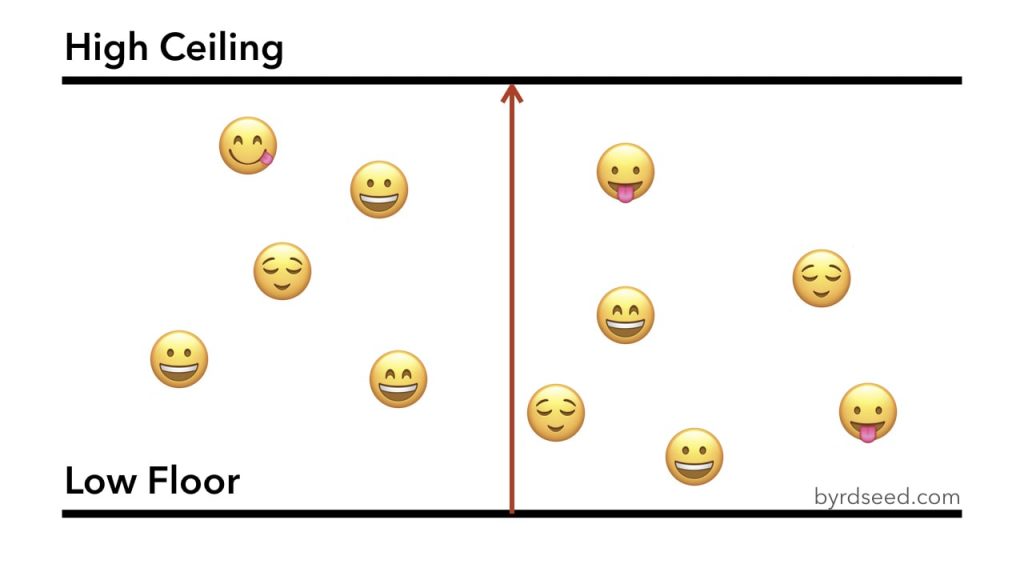To Differentiate: Lower Floors and Raise Ceilings — from byrdseed.com by Ian Bryd
When you’re planning a task for a wide range of students, the terms “floor” and “ceiling” are easy mental shortcuts to increase the range of success for all kids.
Excerpt:
It should be our goal to develop tasks that all students can get started with, but that also scale up for students who are ready for more. This is the easiest way to create a task that can work for everyone.
My friend Lisa has a fantastic piece of differentiation advice:
Plan for your highest-ability students first, then figure out how to onboard your other learners.
Why? Because it’s really hard to increase the ceiling on a worksheet. It’s much easier to lower the floor on, say, a research project. You can always scaffold down – but you can’t always raise the ceiling.
Aiming for a low floor and high ceiling supports all students. Plus, it gives even low-performing kids a chance to go somewhere interesting. You’ll never know who will take advantage of that high ceiling.









